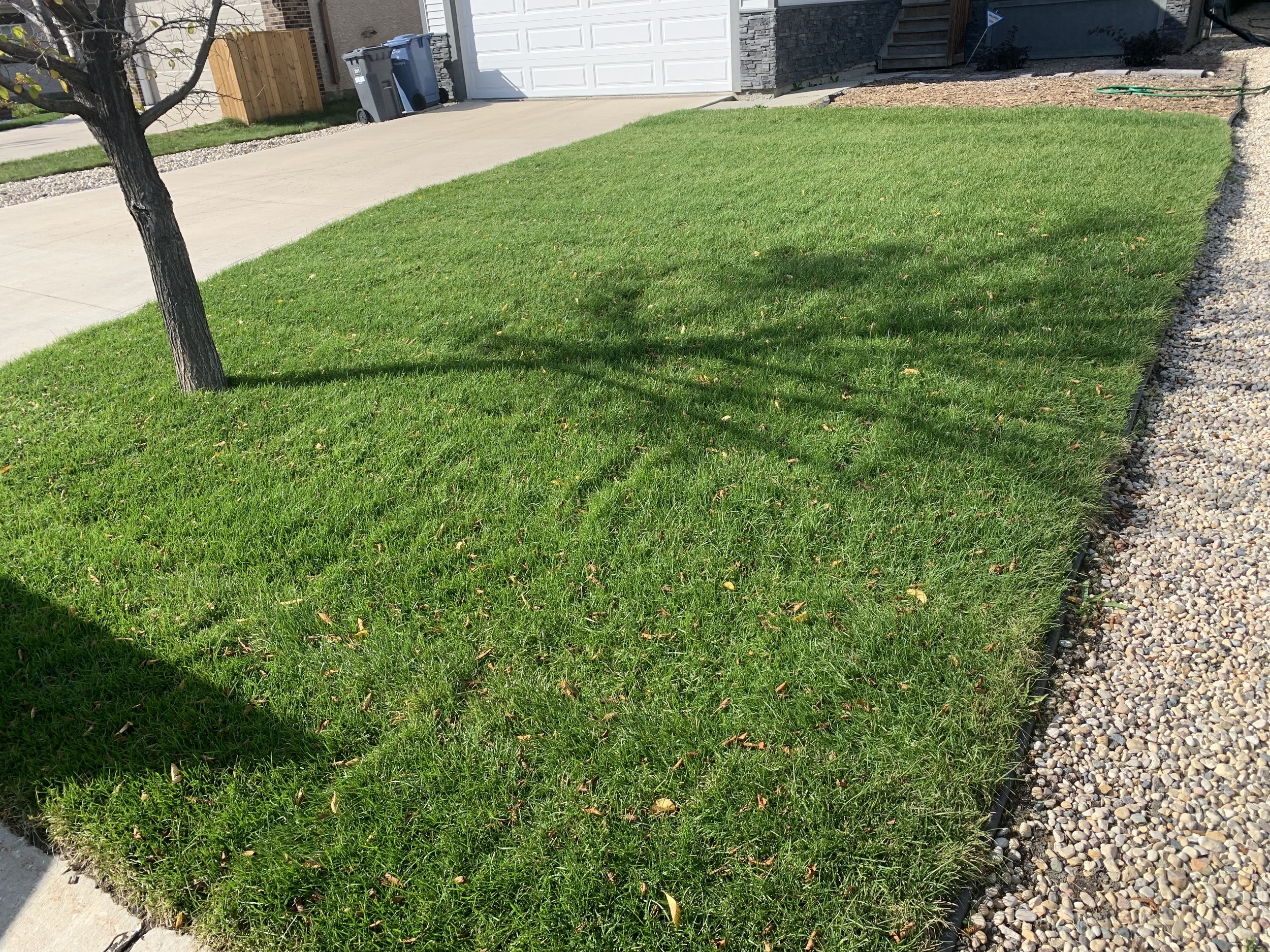Planting Grass Seed In Autumn: A Comprehensive Guide
In Winnipeg, the long winter months can leave your lawn patchy, thin, and worn out. But, if you know what you're doing, autumn can be a golden opportunity to plant some of the best winter grass seeds. When you plant grass seeds before they freeze, the seed settles into the soil surface and waits. As soil temperatures rise in early spring, cool-season grasses like Kentucky bluegrass and perennial ryegrass start to grow and create a dense lawn. This guide covers everything you need to know about dormant seeding, including the steps for successful dormant seeding and tips on how to care for your lawn through the winter:
Benefits Of Dormant Seeding
Dormant seeding is the process of planting grass seed in the autumn months after the soil temperature has dropped low enough to prevent germination. The seed stays dormant through the cold, tucked just beneath the soil surface and waits for warmer conditions to grow. Done right, this sets your lawn up for early success before spring even arrives.
Here are the main benefits of dormant seeding:
Earlier germination: Since seeds are already in place when conditions change, you'll receive a head start on spring growth.
Weed advantage: With less weed activity in cold weather, your grass has more room to thrive.
Natural moisture: Snow and rain keep the ground moist, reducing the need for constant watering.
Less disease pressure: Lower temps mean fewer threats from pests or disease.
Good contact: Dry winter soil makes it easier for seeds to settle where they need to.
Ideal Conditions For Fall Seeding
Timing, soil, and location all matter. The goal is to let your new seed settle without sprouting too early. A sudden frost after early sprouting can wipe out your efforts before spring even begins.
Start when the ground is cold but not frozen solid. In Winnipeg, this typically happens in the autumn once soil temperatures drop below 10℃ / 50℉. You're looking for a window when it's too cold for seedlings to sprout but not so frozen you can't rake or loosen the surface. If the temperature rises for a few days and triggers germination too soon, your seedlings risk dying before spring.
Snow helps more than you might think. A consistent snow cover acts like a natural blanket. It holds in moisture and keeps the soil stable, which helps the grass seed stay dormant. Areas with consistent snowfall and cold conditions make fall an ideal time to plant grass seed.
Choose a calm, sunny spot that isn't trampled by pets or foot traffic. Avoid areas with heavy thatch or thick sod. The best grass seed won't help if it can't touch the soil. That contact is critical for germination once things start to warm up.
Keep the layer of seed light and even. Too much seed or too much mulch on top can suffocate the growth when spring arrives. During an unexpectedly warm and dry stretch, a light misting can help, though nature should handle most of the watering.
Selecting The Right Winter Grass Seed
Not all varieties can handle cold weather or thrive when planted into the ground during a dormant season. Start by choosing cool-season grasses that are adapted to low soil temps and shorter daylight hours.
Perennial ryegrass is used for quick cover. It establishes quickly and can fill in patchy areas when you sow grass seed into bare soil. In addition, fine fescues, including creeping red and chewings fescue, do well in shade, slopes, and moisture.
Look for a balanced seed mix that suits your yard's layout. Areas with more foot traffic may benefit from blends that include tall fescue. In addition, keep an eye on quality. For example, look for high germination rates, recent test dates, and clean blends when dormant seeding.
Steps For Successful Dormant Seeding
Autumn seeding is all about setting the stage and priming your lawn so that once the soil temperatures heat up, your grass seed is ready to germinate and blossom. Here are the key steps to take:
1. Prep your lawn
Mow your lawn lower than usual to help the seed settle in. Thick or matted areas can block seed from reaching the surface, so rake thoroughly.
2. Loosen the soil
Remember you don't want to dig too deep; just roughing it up enough to break the crust of the soil. Light aeration can go a long way to help with worn-down areas.
3. Sow the seed
Spread your grass seeds evenly across thin or bare patches. A handheld or broadcast spreader works well. Don’t layer too heavily because overseeding can lead to poor coverage and weak germination.
4. Secure seed-to-soil contact
Lightly rake again to nestle seed into the soil’s surface. Gently pressing them in with your foot or the back of a rake helps keep them from blowing away in the wind.
5. Water as needed
A thin layer of water is enough to alleviate dryness. From here, let fall and winter weather do the rest.
Post-Seeding Care
Once the seed is in the ground, it needs protection and moisture to stay viable until the soil warms up. In areas without snow cover, adding a light layer of straw may help prevent the seed from drying out or being disturbed by wind or wildlife.
Occasional misting can support moisture retention if the weather stays dry for too long. While the lawn may look unchanged for weeks, the foundation is being set. Much like caring for the lawn in spring, success with dormant seeding depends on consistent care and conditions aligning just right.
Common Mistakes To Avoid
Don’t skip steps or rush the process and your grass seed will never see the light of day. One of the biggest mistakes is planting too early when the soil is still too warm. Another is not prepping the surface and having grass seeds sitting on debris instead of soil.
At Bulger Brothers, we can help with the spring cleanup for your Winnipeg lawn and make sure it's ready to thrive. If your lawn is still patchy in the spring, we can remediate it for you!



